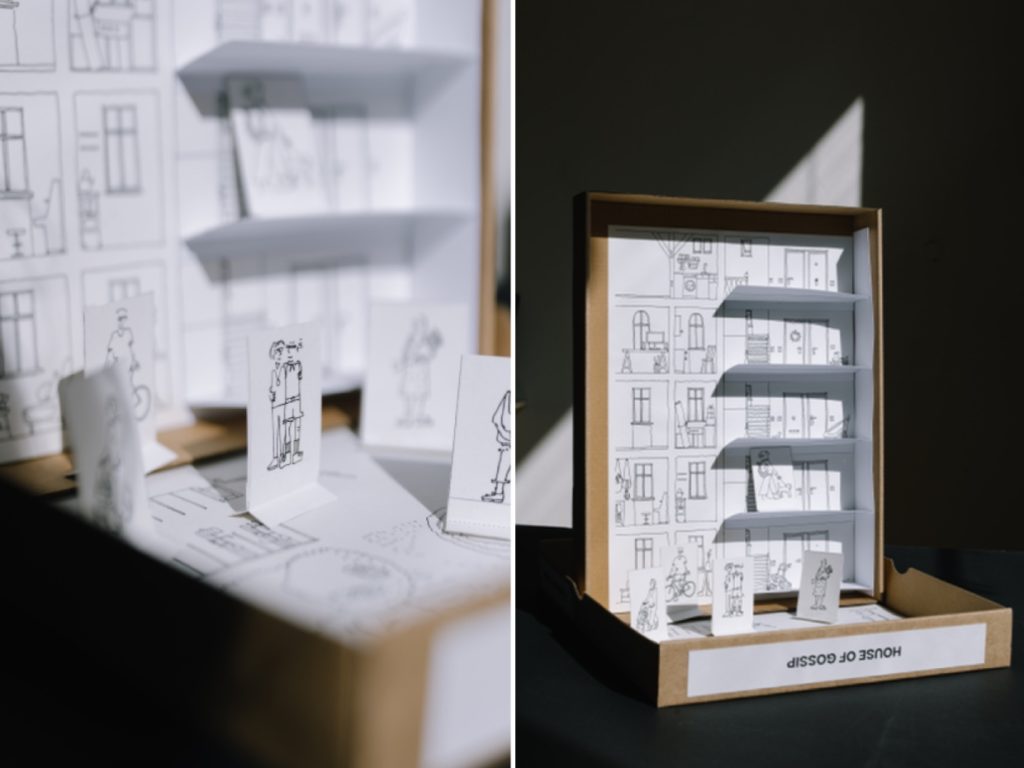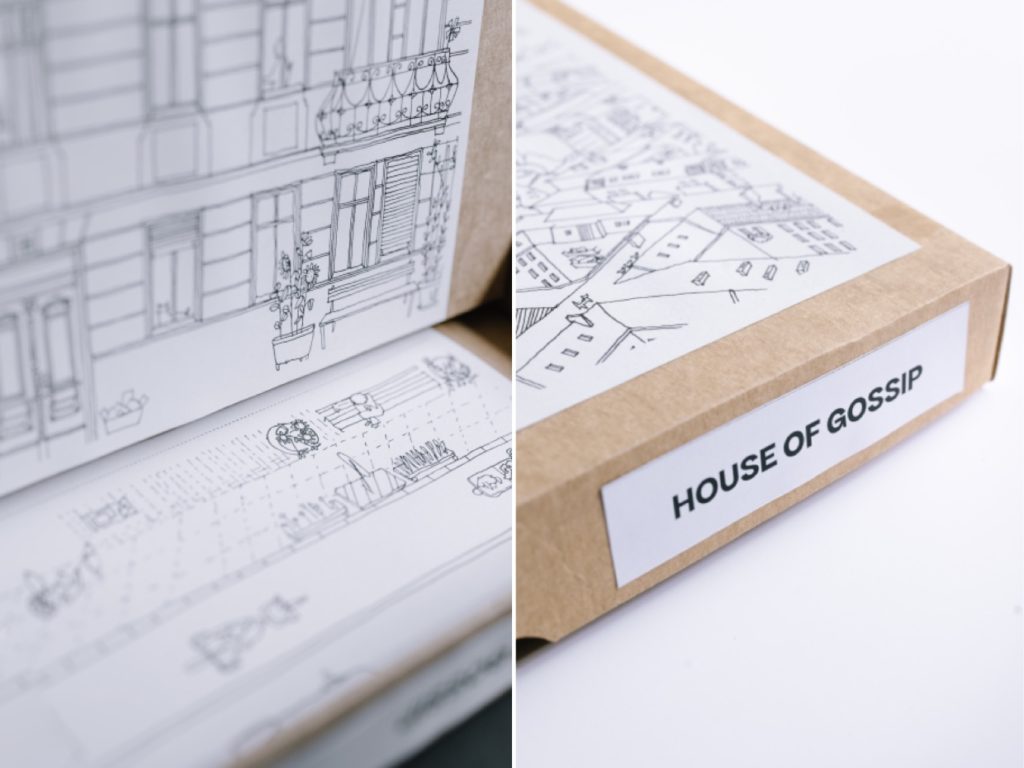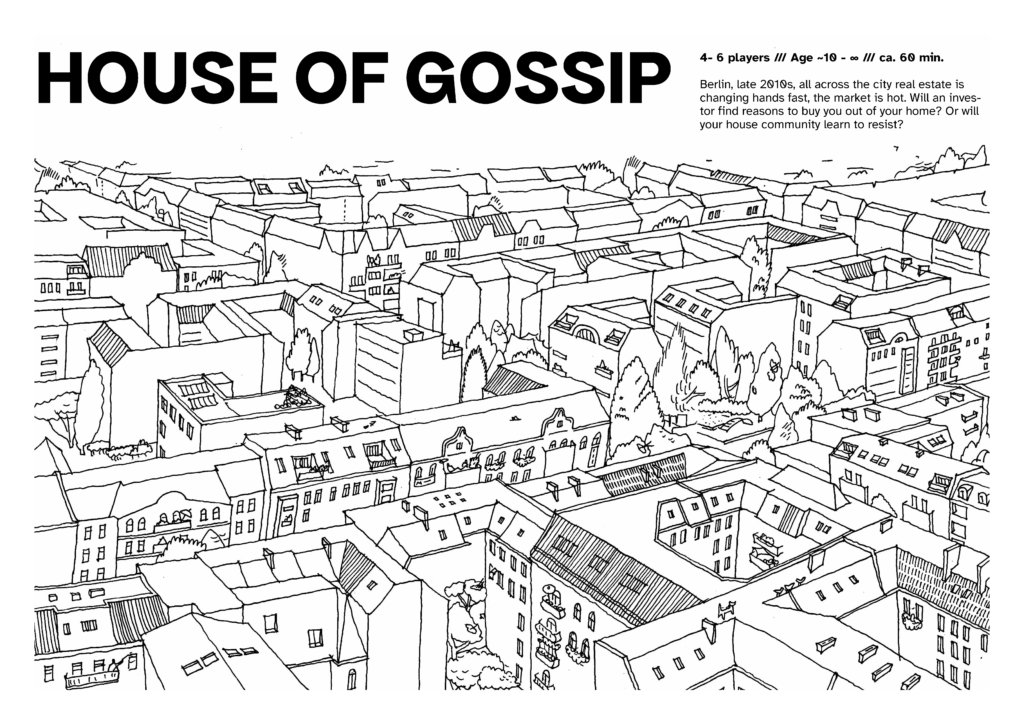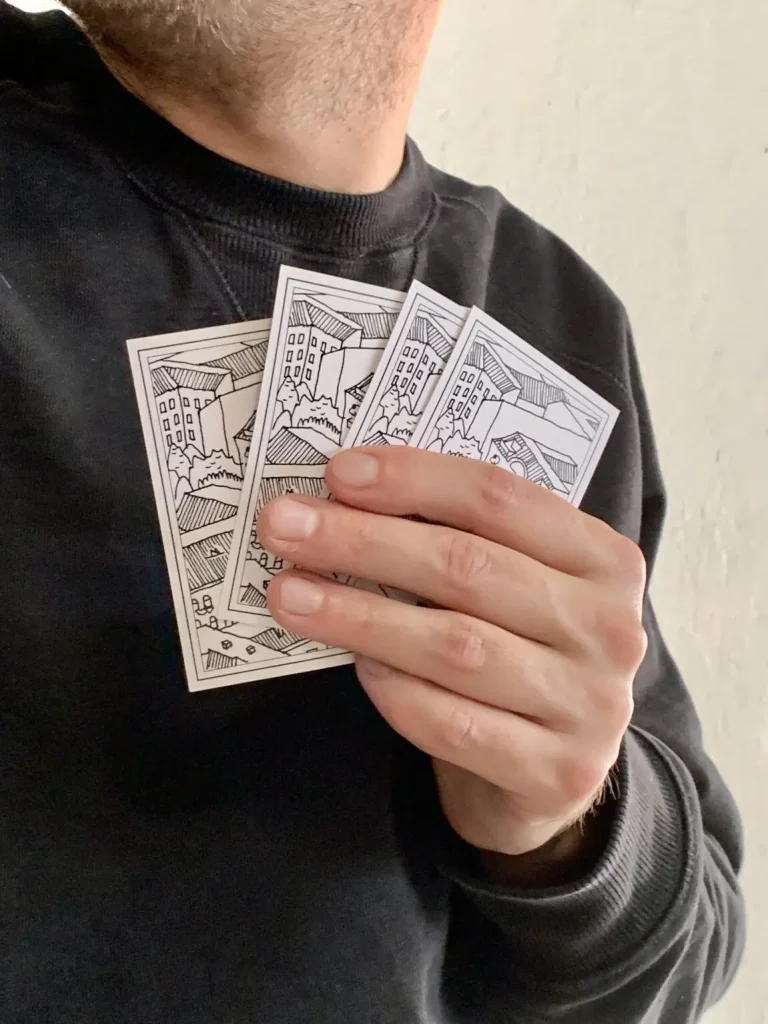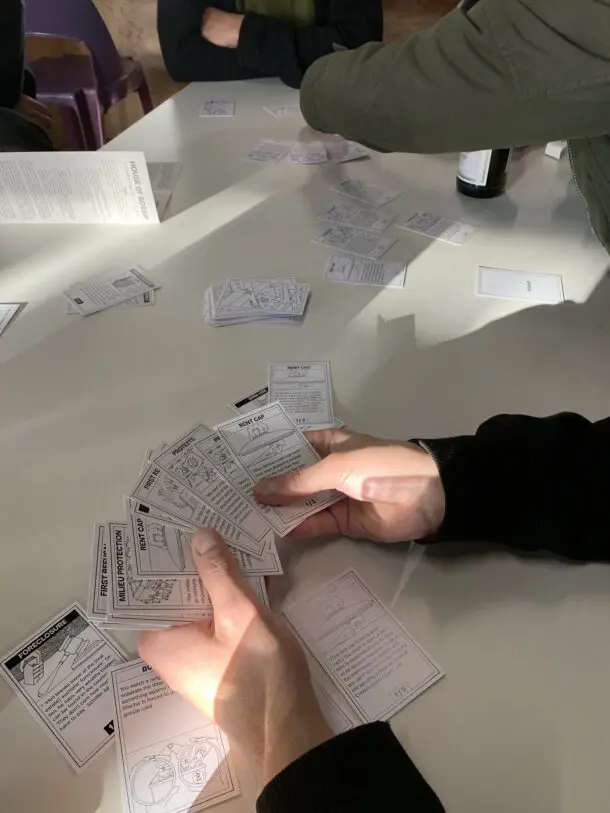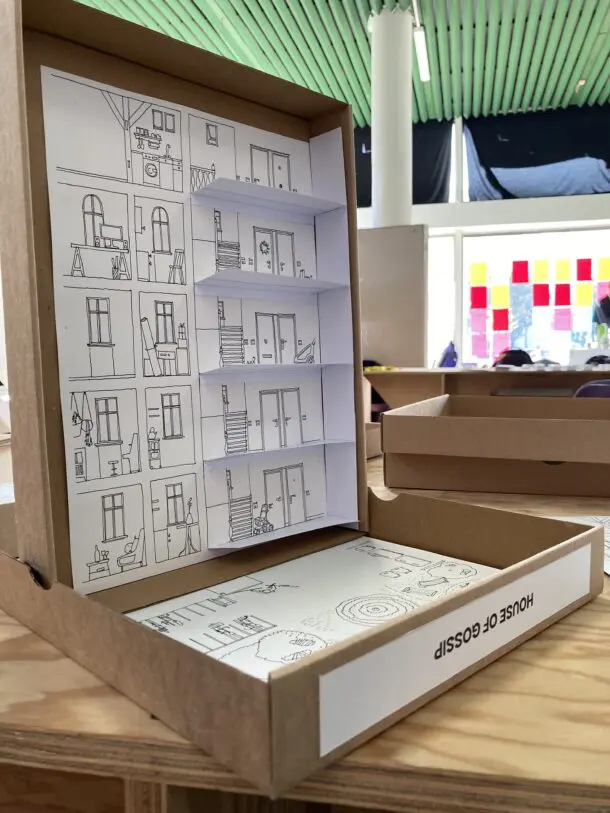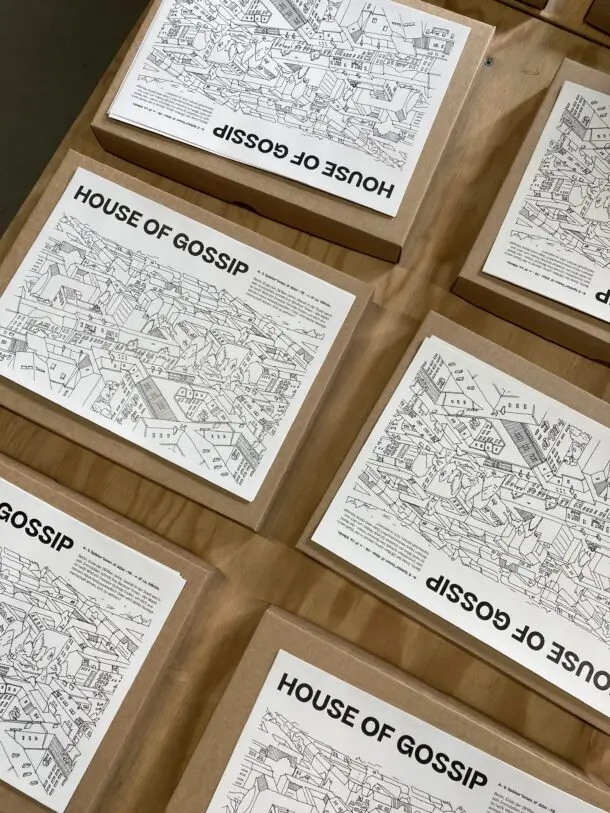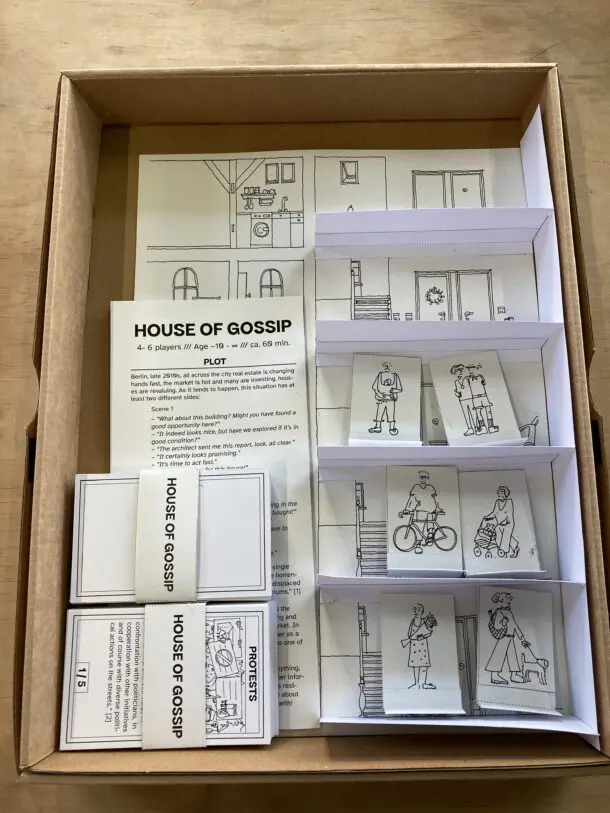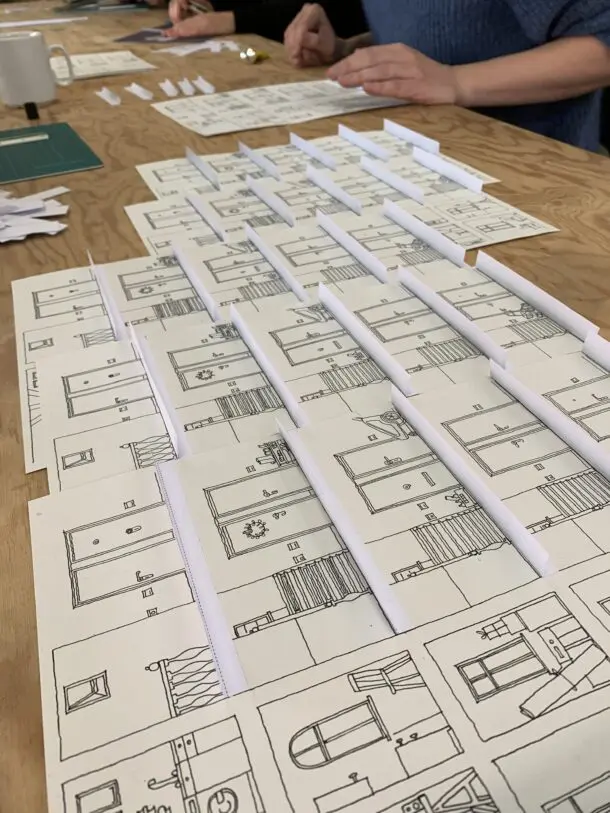Texto publicado simultáneamente en Ankulegi & CTXT

La catástrofe ambiental nos trae de cabeza. Por todas partes aparecen movimientos activistas, pronunciamientos reaccionarios que se les oponen y propuestas de soluciones que se expresan sin ningún atisbo de duda. En esta situación de estupor, en la que empezamos a tomar conciencia de la finitud planetaria, el trabajo de Bruno Latour (fallecido el pasado 9 de octubre de 2022) pudiera ser de gran inspiración para cultivar ecologías vibrantes de pensamiento colectivo, con el fin de abordar los retos del “Nuevo Régimen Climático”.
Ecologistas en guerra
En Alemania, donde he vivido los últimos 8 años, nadie habla de otra cosa: Lützerath. Quizá os suene, es el primer lugar donde han arrestado a Greta Thunberg, tras una prolongada ocupación, sentadas y una batalla campal por su desalojo. Desde hace casi dos años, una infinidad de activistas luchan en este pueblo del Oeste del país al grito de keep it in the ground (dejadlo en el suelo) o Klimaschutz ist Handarbeit (la protección del clima es un trabajo manual). Su objetivo es evitar la desaparición del pueblo ante la ampliación de la mina de lignito a cielo abierto de Garzweiler, que ya ha engullido varias localidades colindantes.
Aunque la ampliación de la mina no es una nueva medida, ha cobrado un carácter extremadamente complejo tras la invasión de Ucrania. A pesar de ser cuestionada por más de 500 científicos, la retórica de cortar la dependencia energética de Rusia ha intensificado la necesidad de extraer carbón localmente, lo que algunos residentes han percibido como una traición por parte del partido Verde, integrante del gobierno de coalición alemán. Esta traición parece haberse visto refrendada por las declaraciones de un parlamentario de los Verdes, que acusa a estas personas que protestan (como también están haciendo grandes medios alemanes) de haber roto con la tradición de la no violencia del movimiento ambientalista, atentando contra la propiedad y la integridad física de otras personas.
En mitad del ruido, una foto de Marius Michusch se ha hecho icónica; tanto por la excavadora que representa––un ser cometierra, verdadero devorador de paisajes––, como por la protección policial que documenta––reflejando la violencia de que no hay alternativas al modelo de producción extractivista––. La imagen constituye un buen resumen de los dilemas contemporáneos de un mundo ante el abismo. Espoleados por la sensación de que a nuestro alrededor el mundo arde y la gente sufre, vivimos una época de renovadas pasiones ambientalistas, a las que muchas veces se les oponen distintas formas de negacionismo. Frente a la defensa del pueblo, hay quienes sugieren que el desalojo se haga rapidito, que se dejen de tonterías, que hay que poder seguir calentando nuestras casas, que no pasa nada.
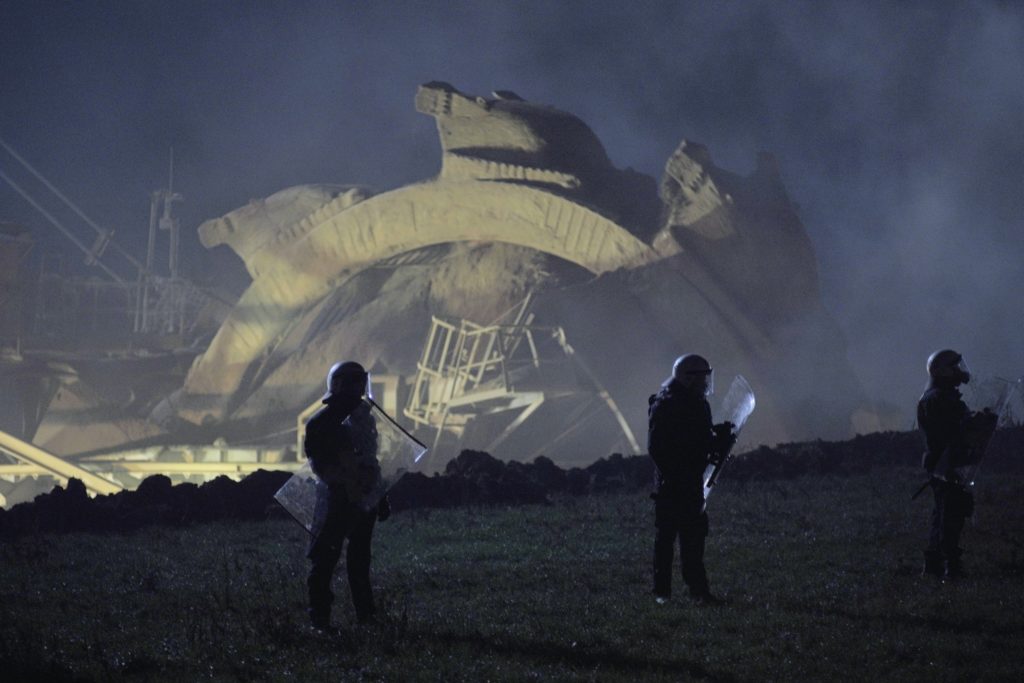
Pero claro que pasa. Estamos en un momento muy complicado y vertiginoso. Algo ha cambiado en muchos de nosotros. Quizá fue un poco antes de la pandemia, con esos fuegos desbocados de Australia y sus koalas calcinados. O quizá fueron las olas de calor que aplastaron Europa el pasado verano. Ya no somos los mismos, ni siquiera los que se niegan a aceptar que algo esté pasando. Algo no termina de funcionar en nuestra forma de vida. Ante los reiterados avisos de la catástrofe ambiental en curso, la búsqueda de seguridad lleva a algunas personas a aferrarse a pronunciamientos identitarios rotundos, cuando no profundamente violentos. Pero también se suceden las visiones apocalípticas. Y, para hacerlo todo aún más complicado, revolotean por todos lados soluciones de distintos expertos, muchas veces incompatibles, que se expresan sin un ápice de duda. Malos tiempos para la lírica o, lo que es lo mismo, la pausa, la discusión y el pensamiento colectivo.
La esperanza (de Pandora) es lo último que se pierde
Precisamente en un momento así, me gustaría reivindicar la relevancia del trabajo de Bruno Latour ––filósofo y antropólogo de la ciencia y la tecnología, ensayista de la ecología política–– que, tomando conciencia de la finitud planetaria, ha hecho relevante otra manera de pensar, más alegre y viva, vibrante y tentativa, para hacer frente a la mutación climática. El suyo era un modo de abordar problemas gigantescos (la verdad, la eficacia, la transformación de la política como un asunto más que humano) alejado de las grandes narrativas. Su planteamiento era siempre empírico, cuando no específicamente etnográfico. Latour fue uno de los grandes artífices de lo que se conoce como “teoría del actor-red”: una caja de herramientas descriptiva para entender los modos de existencia de los modernos, nuclear para aproximarse a los dilemas de la contemporaneidad.
Por ello, cuando supe de su muerte, el pasado 9 de octubre de 2022, no pude evitar llorar. Como uno llora cuando pierde a alguien que le ha cambiado el curso de la vida, con esa mezcla de desesperación y de reconocimiento. Y recordé cómo empecé a leerlo, de la forma más absurda. En 2002 cogí el libro La esperanza de Pandora de la biblioteca de la madre de un amigo. Lo abrí, me picó la curiosidad y no lo podía dejar: aquello era un relato apasionante de los procesos de construcción de los hechos o cómo las técnicas hacen mundo. Le pedí a mi amigo traerlo de vuelta al día siguiente, pero esto nunca ocurrió. No pude proteger el libro cuando comenzó un chaparrón espantoso mientras esperaba el autobús en una parada sin marquesina. A pesar de la vergüenza de no saber cómo devolver un libro maltrecho, desde entonces Bruno Latour me ha acompañado media vida. Siempre vuelvo a él cuando necesito recordarme que el oficio de investigar puede ser también divertido y apasionante: algo para lo que, seamos sinceros, tenemos muy poco soporte institucional. Pero como siempre me recuerda desde una de mis estanterías aquel libro mojado con el que empezó todo, la esperanza (de Pandora) es lo último que se pierde.
Le conocí en persona en 2005. Aún recuerdo la fascinación de merodear con él entre las instalaciones de la exposición Making Things Public, que comisarió en el ZKM de Karlsruhe, donde fui a entrevistarlo. Sin embargo, tener de cuerpo presente a la persona que a uno le inspira no es necesariamente lo más relevante. Lo que siempre me atrajo de su lectura fue que cada vez que lo leía vibraba. Literalmente, el mundo se movía: por ejemplo, aun con el libro mojado en la mano, ese autobús que me llevaba a casa era un ente vibrátil, una componenda azarosa e inestable de distintas entidades cooperando, a través del tiempo y el espacio, para transportarnos.
Aunque tras el 15-M me distancié un poco, las prioridades eran otras y la creatividad salvaje omnipresente, desde 2019 me fascinaron sus entrevistas eléctricas en la radio France Inter. En ellas era siempre divertido y lúcido, comentando asuntos como los Gilets jaunes o el Brexit y la pandemia desde lugares interesantes. A causa de ello, poco a poco me enfrasqué en su trabajo reciente, que pone en el centro la actual mutación ecológica. Una situación que, según argumentaba, requiere de nosotros repensar el papel de los saberes, así como las formas políticas que tendremos que ensayar, pues el reto excede a nuestras actuales instituciones.
Hay muchas maneras de hacer un homenaje intelectual, también de hacerlo mal. Sólo se me ocurren algunas de intentar hacerlo bien. Frente a la idealización de personas, la historia intelectual, pues las aportaciones, para ser valoradas, requieren reconstruir bien el contexto de debates en que se hicieron: el trabajo de Latour sólo puede entenderse como un “vuelo compartido” con otra mucha gente, de entre quienes destacan, quizá, Michel Callon, Michel Serres e Isabelle Stengers (véanse estos dos artículos recientes de Callon, donde reconstruye muchas de estas interacciones: 1 | 2). Pero también, vindicar los “pequeños gestos” de una manera de pensar, como la centralidad del humor en la escritura de Latour que reseña Morgan Meyer en un reciente comentario. Y, por último, ensayar su puesta en uso, para lidiar con los problemas propios, que es lo que quisiera hacer aquí.
Al reencontrarme con su lectura apasionada, me di cuenta de que hacía tiempo que no vivía esa frescura de volver a sentir el mundo vibrar cuando uno lee. Esta es la razón que me lleva a querer compartir mi pequeño homenaje a un pensador alegre que cultivó ecologías de pensamiento colectivo, cruciales para abordar las diatribas y los retos del momento presente. Esto no tiene que ver con hacer proselitismo, sino con querer resonar con su forma de pensar o, dicho de otro modo, con practicar un gesto latouriano.
En la zona crítica
En su trabajo reciente hay una noción central: “Nuevo Régimen Climático”, que remite a los problemas a los que nos ha arrojado un modo de vida particular, la producción y su dependencia de las energías fósiles. Un régimen destructivo que ha transformado nuestros entornos, moldeado nuestros saberes e instituciones políticas durante más de un siglo, poniendo en riesgo la habitabilidad del planeta. Al mismo tiempo, esta caracterización sugiere la posibilidad de su transformación, de un antiguo a un nuevo régimen: lo que supone la búsqueda de otros horizontes de sentido para engendrar formas plurales de habitabilidad en un momento francamente complejo y problemático, sin garantías. De todo eso tratan el erudito Cara a cara con el planeta, los ensayos para el gran público que le han hecho popular recientemente, Dónde aterrizar y Dónde estoy, o el maravilloso catálogo de la exposición Critical Zones.
Como Latour repetía incesantemente: a pesar de que la producción ha tenido efectos planetarios, no vivimos en el mismo planeta y necesitamos volver a aprender a vivir juntos. Pero para ello los modernos, principales artífices de este cambio, deben volver a entender su lugar en el mundo. El proyecto lo resumió muy bien Patrice Maniglier, en uno de los mejores obituarios académicos producidos tras la muerte de Latour: “Hacer aterrizar a los modernos supone … reabrir la pluralidad de las proyecciones terrestres. Y, también, reflexionar sobre las condiciones en las que la modernidad podría coexistir en la misma Tierra con otras formas de habitación terrestre, sin erradicarlas ni subyugarlas”. Para caracterizar esa pluralidad de proyecciones terrestres, Latour hablaba de Gaia: un término tomado de los trabajos científicos de James Lovelock y Lynn Margulis, pero que convierte en un concepto propio.
Gaia no se trata ni de la madre tierra new age ni del planeta como totalidad sistémica o cibernética, como lo tratan las ciencias que estudian la simbiogénesis o el sistema Tierra. Antes bien, es un ente emergente, que aparece y desaparece, donde es central la actividad de los vivientes: quienes producen la inestabilidad atmosférica que hace única a la Tierra. Su consistencia es la de un tapiz parcheado, no unitario y complejo. Ese carácter requiere todos nuestros esfuerzos para conocer sus “intrusiones”, a muy diferentes escalas. Las ramificaciones e interpenetraciones complejas que Latour mostró y reflejaba en su trabajo colectivo con las científicas y los científicos de los Observatorios de la Zona Crítica, nos conminan a la tarea de no dejar de indagar nunca. Porque hacer describibles y discutibles esas “zonas críticas” (donde los vivientes se la juegan literalmente, pero también donde más se afanan para continuar haciendo mundos vivibles, en su pluralidad irreducible) no es fácil.
Lüzerath es un interesante ejemplo de ello. Según el politólogo Pierre Charbonnier, el retorno de la extracción minera a Europa tras la invasión de Ucrania rompe una distinción espacial fundacional moderna, crucial al extractivismo colonial de la producción: la que distingue “dónde vivimos” y “de dónde vivimos” los modernos. Parece previsible que, teniendo de nuevo las minas cerca de casa, estos conflictos irán a más y serán más duros, lo que podría traer nuevas vías para la ecología política. Pero esta ruptura parece habernos arrojado más bien a lo que Charbonnier llama una “ecología de guerra”, donde el frente se ha desplazado a nuestras formas cotidianas de uso energético: la situación paradójica de sostener desde el consumo la maquinaria de guerra a la que muchos nos oponemos políticamente, o donde parar la maquinaria de guerra puede tener que ver con transformar nuestra relación con la producción y sus usos energéticos. Esa ecología de guerra y sus dilemas son el trasfondo de la imagen de Marius Michusch que antes mencionaba. Es una fotografía potente que quizá gane premios, pero que, también, permite hacer una distinción demasiado rápida entre quiénes son “los buenos” y “los malos”. En la mayoría de casos la distinción es compleja.
Pensemos en las acciones de colectivos que están redefiniendo los contornos de la acción directa del ambientalismo, como Letzte Generation (última generación) en Alemania, Just Stop Oil en Reino Unido o Futuro Vegetal en España. Más allá de la famosa y disputada curadoría de arte del fin del mundo, sopa vegetal y pegamento mediante, una de las acciones más peculiares de concienciación cívica de Letzte Generation ha sido pegarse al asfalto y hacer sentadas parando el tráfico en cruces urbanos. Tras el estupor inicial de quienes se veían forzados a parar sus coches, cada vez más conductores y viandantes reciben sus sentadas con violencia. En algunas acciones recientes, al ver que iban a bloquear la calle, los coches se han negado a parar, poniendo a los activistas en peligro y llegando a arrollarlos en ocasiones.
Ciertos medios alemanes se dirigen a estos activistas con el epíteto despectivo de Klima-Kleber (los que se pegan por el clima). Su ridiculización por parte de los medios me produce una profunda tristeza porque, a través de estas acciones, estos colectivos buscan politizar la catástrofe planetaria, advirtiendo del papel central que cumplen las energías fósiles en ello, empleando el tráfico rodado para demostrar su posición. Pero la rabia y el rechazo que muestran los conductores parece revelar que esa ecuación no es tan sencilla. Cuando menos, opera paradójicamente por abstracción: parar ese coche en concreto, no implica parar el problema y, lamentablemente, tampoco parece invitar a considerar las razones de dependencia del coche de aquellos a quienes paran. Lo que, sin duda, no hace la violencia menos desdeñable, pero ¿cómo salir de este dilema?
La importancia de describir bien
Para hacer estas situaciones pensables creo que Latour puede ser de gran relevancia. En Dónde aterrizar, por ejemplo, propuso recuperar los “cuadernos de quejas” anteriores a la Revolución Francesa, donde los diferentes estamentos fueron llamados a describir los problemas que aquejaban a sus territorios. Esta herramienta descriptiva cobró sentido renovado en el contexto de las revueltas de los Gilets jaunes, donde se puso en discusión cómo ciertas políticas ambientales pudieran impactar paradójicamente en quienes no tienen dinero para renovar su viejo diésel. En un consorcio junto con profesionales de la arquitectura y las artes escénicas, Latour y sus colegas exploraron entre 2019 y 2020 en qué podrían consistir unos “nuevos cuadernos de quejas”, desarrollando para ello cartografías personales y territoriales en diferentes ciudades francesas. Se dibujaron, así, espacios de disputa y de alianza.
A mi juicio, estas experiencias empíricas son de gran inspiración si deseamos encarar los dilemas del “Nuevo Régimen Climático”. Para lidiar con el estupor necesitamos aprender a describir bien: tomándonos el tiempo para entender las redes de las que dependemos y su escala variable. La descripción es una forma de intervención: como en los cuadernos de quejas, implica también inscribir las desigualdades que aquejan a esos territorios, sus orígenes y disputas. Al hacerlo, se hace difícil, sin embargo, convertir a unos en heroínas o héroes incomprendidos y a otros en zombis de las energías fósiles. Pero, a la vez, esa propuesta descriptiva nos permite ir más allá del enfrentamiento entre gente que, de otra manera, pudiera compartir mundo o lucha, dando paso a otras políticas de re-ensamblaje de nuestras formas de vida, más allá de la producción. Se trata de una tarea compleja, sin duda.
El septiembre pasado, Philip Oltermann publicó un artículo en el diario The Guardian que lidiaba con esa complejidad. Relataba los retos que enfrenta una planta de la multinacional BASF, en la localidad alemana de Ludwigshafen, cuyo trabajo podría verse afectado por el racionamiento del gas ruso, tras las sanciones por la invasión de Ucrania. El artículo habla de un lugar difícil de pensar: con profundos y perversos lazos socio-ecológicos, en el centro de un brutal pliegue de escalas. No sólo por sus 2850 kilómetros de tuberías. Además, la planta consume una cantidad anual de gas semejante a la de toda Suiza. A pesar de su apariencia exótica y lejana, los productos químicos que produce están profundamente incrustados en el tejido de lo cotidiano: pasta de dientes, vitaminas, aislamiento para edificios, pañales, ibuprofeno para analgésicos o suministros para la industria automovilística de media Europa.
Desde que lo leí no dejo de pensar en ello: ¿cómo intervenir en ese pliegue abigarrado, cuyo desmantelamiento o crisis afecta no sólo al consumo de combustibles fósiles o industrias de las que subsisten muchas personas, sino también a la posibilidad de contar con productos médicos y de higiene que permiten nuestra supervivencia? En su artículo Imaginar los gestos-barrera contra la vuelta a la producción anterior a la crisis, publicado durante el confinamiento, Latour argumentaba que: “No se trata ya de retomar o de modificar un sistema de producción, sino de salir de la producción como principio único de relación con el mundo”. Pero, ¿qué gestos-barrera podemos ensayar para reensamblar lo que Ludwigshafen ha plegado de otros modos? Esta es una tarea que requiere un ingente trabajo colectivo, toda una inventiva política para explorar ensamblajes alternativos.
La inmensidad del reto produce parálisis. A esto no ayuda la proliferación de diferentes formas de ignorancia instituida o negacionismo que nos abisman. Y, muy a nuestro pesar, tampoco los relatos simplistas y guerreros de la práctica científica, tan presentes en el movimiento ambientalista. El problema de lemas como “seguir a la ciencia” o “unirse contra el negacionismo” es de orden práctico, tanto en su sentido laxo —¿a dónde, cómo, por qué medios?— como en el filosófico pragmatista: es decir, hay que explorar con calma cómo se ha construido un hecho y sus efectos —“para qué” y “a costa de quiénes”—, sin dejarnos embaucar por soluciones en apariencia sencillas. Sea como fuere, debemos llevar a cabo un importante trabajo colectivo de descripción, lo que requerirá debates llenos de disputas, si aspiramos a dirimir cómo enfrentar la tarea de armar otra forma de vida.

Inventar dispositivos colectivos
Hacia una nueva clase ecológica
Para ello, quizá necesitemos renovar el vocabulario y las prácticas de la ecología política. Eso implicará, por seguir con el gesto de inspiración latouriana, pluralizar y ampliar los modos de implicación pública de la ciencia más allá de formas tan iluministas como la divulgación o la pedagogía, centradas en “tener razón”; algo que no parece muy útil para hacerse con la complejidad de los problemas y la necesidad de perpetua indagación del presente. A pesar de que debemos congratularnos de que haya devenido asunto público, necesitaremos muchas más voces que las que copan las trifulcas mediáticas entre colapsistas, decrecentistas y partidarios del Green New Deal. También, aprender caso a caso a dimensionar los debates para participar de la composición de entornos más habitables para distintos seres: sin obviar la complejidad, pero sin abundar en la desesperanza ni la esperanza estériles.
En ese sentido, en su trabajo reciente con Nikolaj Schultz, Latour habla de la necesidad de una “nueva clase ecológica” que, al igual que la obrera en el siglo XIX, debe ser construida. Sin embargo, y aquí empiezan los problemas, la clase obrera no puede ser el molde: la materialidad y el sentido de la historia son distintos, la tarea de composición de otro orden. Para empezar, la afectación de los fenómenos ecológicos es muy diversa en sus expresiones, no hay una única naturaleza. Para seguir, la producción, y no sólo su redistribución o reapropiación, es el problema. Como Latour mencionaba en ese artículo durante el confinamiento antes citado: “quizá es el momento de inventar un socialismo que discuta la producción en sí misma … la injusticia no se limita únicamente a la redistribución de los frutos del progreso, sino a la manera misma de hacer fructífero el planeta”.
Para hacerse sensible a estos retos y la indagación que eso requiere, será importante, a su parecer, equipar a esa clase. Y hablan de la importancia de las artes y su capacidad de describir y de afectar para ello. No artes pedagógicas o divulgativas: con su moral ya precocinada o desplegando un saber ya cerrado. Más bien, se trataría de experimentar con lo que denominan unas “artes políticas”: la práctica especulativa y exploratoria de las condiciones (estéticas, epistémicas y morales) desde las que abordar el “Nuevo Régimen Climático”, así como de las configuraciones políticas que se harán ahí relevantes (un trabajo que Latour inició en su libro Políticas de la Naturaleza y desarrolló posteriormente en el catálogo de la exposición Making Things Public).
El reto, como recordaba recientemente Latour en su contribución al libro que relata la experimentación durante más de una década de la Escuela de Artes Políticas (programa de estudios que dirigía en Sciences Po), es que “no hay mundo común ni nunca lo ha habido. El pluralismo estará siempre con nosotros”. Esto requiere de exploraciones y tanteos siempre situados, dimensionando los problemas caso a caso, para explorar los contornos de lo común, pero también las divergencias. En diferentes iniciativas colectivas del propio Latour, junto con Frédérique Aït-Touati y Alexandra Arènes, la dramaturgia y el arte de los diagramas han sido dispositivos experimentales centrales, junto con las exposiciones antes mencionadas, para describir y poner en discusión distintos problemas, así como para explorar las formas de abordarlos políticamente.
La tarea de esas artes políticas para componer una clase ecológica, sin embargo, requiere el acompañamiento de una ciencia que no se centre en perpetuar el estilo aberrante que ha popularizado Don’t look up: echándose las manos a la cabeza ante lo idiotas que somos, porque no escuchamos. Antes bien, hace falta una ciencia que participe del proceso vibrante de indagación de lo existente y de lo posible. La clase ecológica, según Latour y Schultz, debiera estar integrada también por cuadros políticos y funcionarios del Estado. A pesar de la prevención que este aserto pueda generar, esto pudiera ser crucial para su éxito. Asimismo, los partidos y movimientos ecologistas deberían pasar de moralizar, apesadumbrar y regodearse en la catástrofe, a explorar, recuperar y defender, con alegría, distintos sentidos, no unitarios, de buena vida más allá del proyecto moderno (como, por ejemplo, el Sumak kawsay, pero también como en Lützerath).
Todo ello será necesario para pensar la des-economización que necesitamos emprender. Ese proceso requerirá dejar cosas de lado, frugalidad y sobriedad, pero también hacer existir distribuciones más justas de la habitabilidad y la imaginación de lo posible: ensayando distintas nociones de prosperidad para convertir esa clase ecológica en una clase abiertamente múltiple o, como diría Marisol de la Cadena, “común a través de la divergencia” (lo que hace falta en un kampong de Yakarta puede no ser lo mismo que en una eco-granja de los Alpes, y no serán lo mismo hoy que mañana). ¿Quizá esta idea de una clase ecológica permita construir puentes ayudando a confederar, sin perder las diferencias, a eco-feministas, decrecentistas, movimientos de ecología negra, decoloniales e indigenistas o a diferentes vertientes de eco-marxismo y ecosocialismo?
Frente a la dureza de lo que los próximos años traerán y para desactivar la desesperanza de los cambios que tendremos acometer, será más relevante que nunca la ecología de saberes vibrantes que Bruno Latour cultivó en vida: con su experimentación descriptiva y su pensamiento colectivo generativo. Ante el serio reto del “Nuevo Régimen Climático”, en situaciones donde el miedo nos atrapa, no nos deja pensar y caemos en la tentación de abrazarnos a quienes nos ofrecen soluciones fáciles, quizá sólo esa alegría del pensar colectivo pueda ayudar a engendrar la habitabilidad plural de nuestras zonas críticas. Ese sería su mejor legado.










